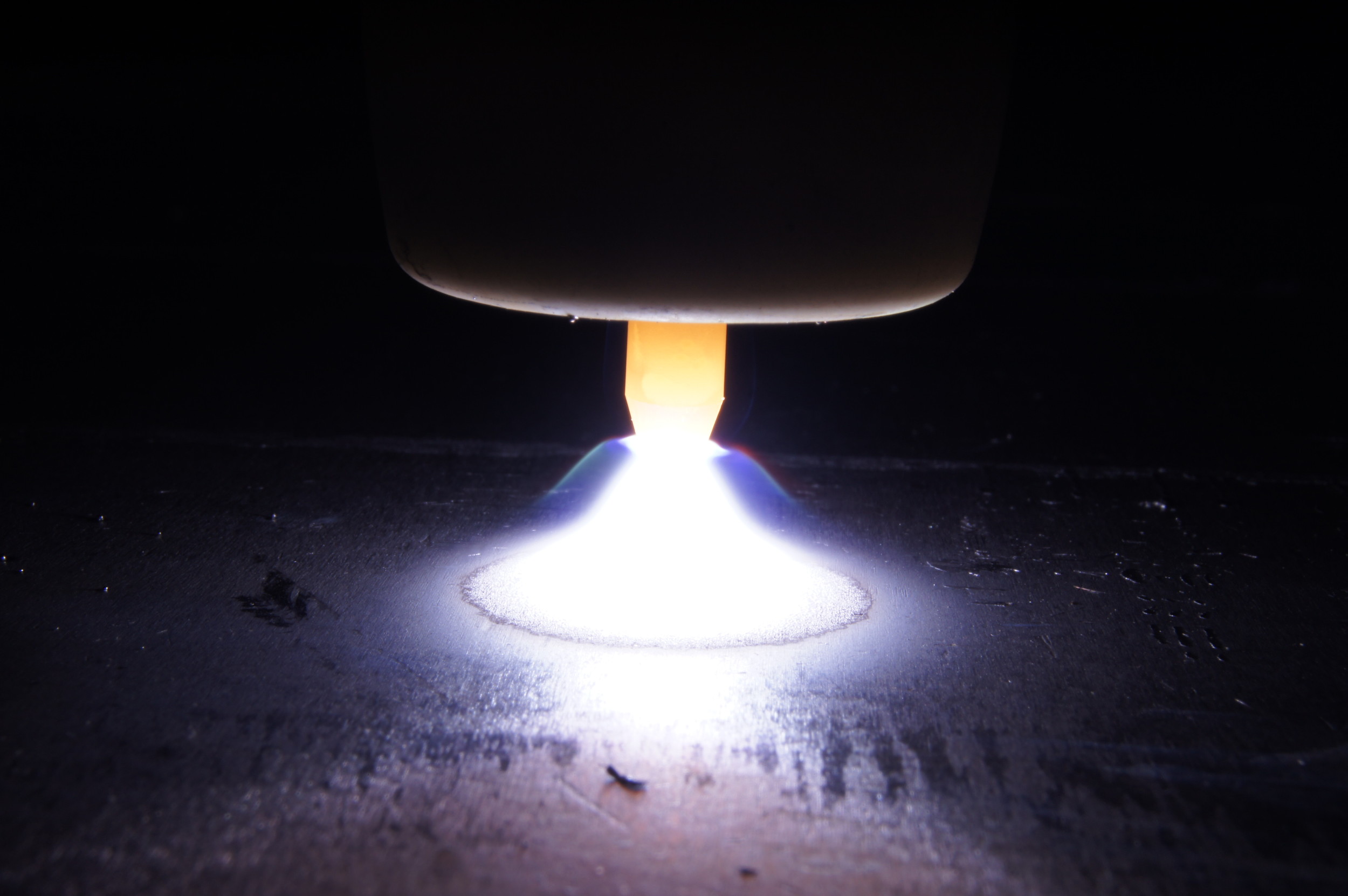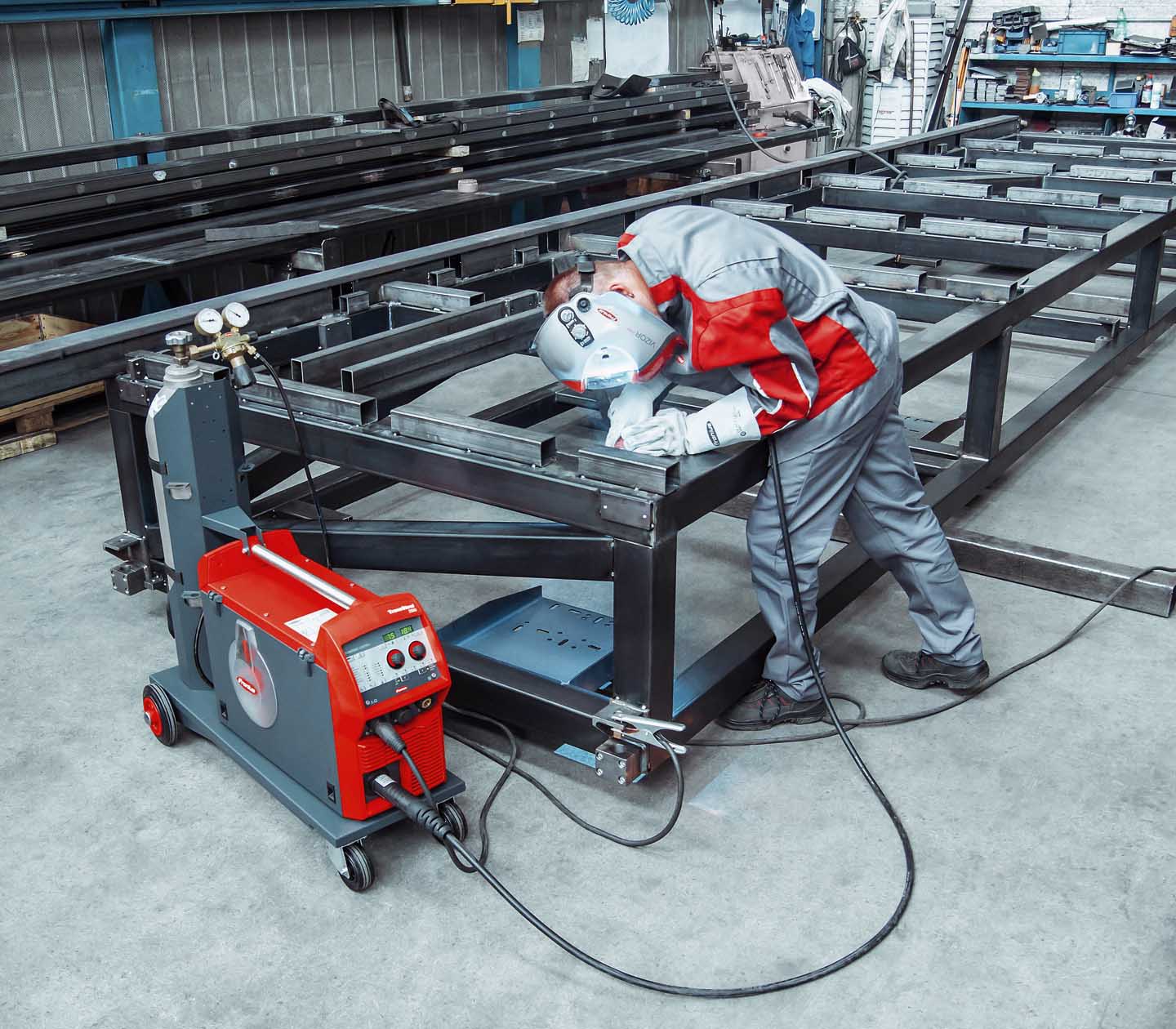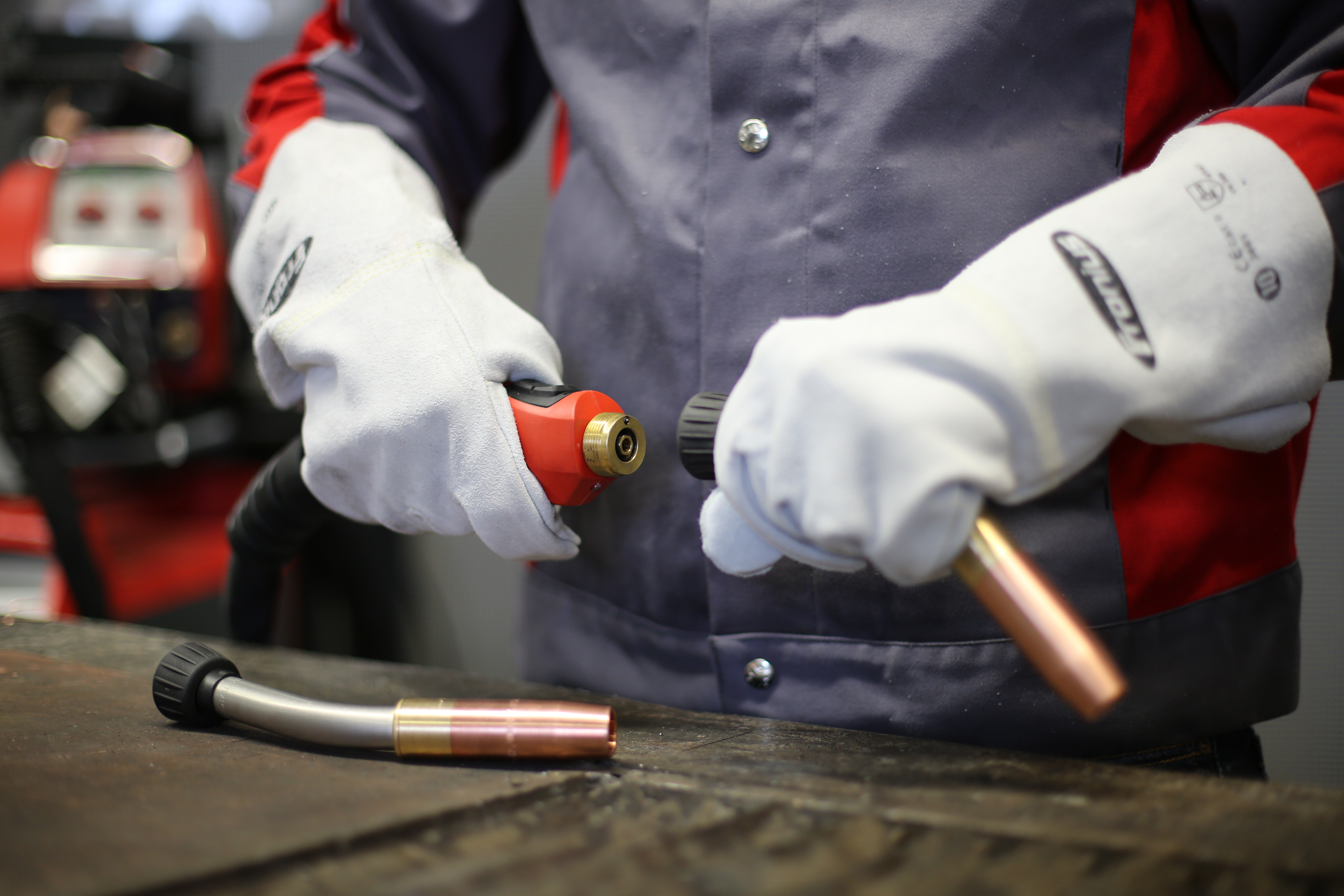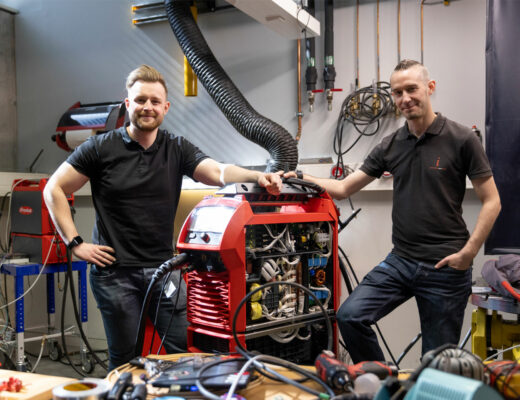A bright, bluish light. Everything’s fizzing and crackling. You can feel the tension in the air. This is what springs to most people’s minds when they hear the word “arc”. Lightning is an arc that you might see during a thunderstorm. On the railroad as well, an arc sometimes forms briefly between the catenary and the pantograph. Welders use an arc in a targeted way to join metals. But what precisely is going on?
Lightning
Railroad arc
What is an arc and how is it created?
An electrical potential difference must exist between two points in order for an arc to form: There is a surfeit of electrons (the negatively charged elementary particles within the atomic shell) at one end, and hence a negative charge. At the other end, the lack of electrons results in a positive electrical charge. This difference generates a voltage.
A phenomenon known as a dielectric breakdown occurs under certain conditions. This happens when physical forces attempt to balance out the difference between the charges. A channel is created in which the heat and high voltage ionize the gas between the poles to form an electrically conductive plasma. Only current can flow through this plasma channel. Depending on the type of power source, the breakdown can occur as a spark or a flash and is extinguished just as rapidly as soon as the difference in charge is balanced out. Alternatively, it can continue to burn as an arc.
Atom structure
Digression: plasma
When high levels of energy impinge on a gas (for example, current on our atmosphere), the heat generated causes the gas particles to become ionized. Electrons are removed from neutral atoms during this process, leaving behind separate quantities of positively charged ions and negatively charged electrons. This mixture of charged and neutral particles is called plasma.
In contrast to gases, plasma is electrically conductive, as the free charge carriers (i.e., the ions and electrons) can carry a current.
When the free electrons collide and combine with ions, the energy they absorbed during their earlier separation is released again in the form of light. What we perceive as lightning, electrical sparking, or as an arc is the plasma column through which the current flows. The current itself remains invisible.
Plasma lamp
What is arc welding?
The temperature within the plasma column of the arc lies between 3,500 and 15,500 degrees centigrade; high enough to melt and join metal. An arc burns between the parent material and the electrode, which will have the opposite polarity.
In the case of gas metal arc welding (GMAW), the polarity of the wire electrode is positive while that of the parent material is negative.
In the TIG process, the current flows between a tungsten electrode with negative polarity and the workpiece with positive polarity.
A distinction is made between various arc welding processes:
Arc welding with a consumable electrode
Gas metal arc welding (GMAW) uses a gas that prevents the molten metal from reacting with the atmosphere. The name given to the welding process depends on the type of gas used, which may be inert, such as helium, argon or a mixture of both, or active, for example CO2. The respective welding processes are known as metal inert gas (MIG) or metal active gas (MAG) welding. The endless wire electrode (welding wire) melts during the process and acts as a filler metal.
A special form of GMAW welding: The Tandem process with two welding wires and two arcs.
Manual metal arc welding: MMA welding, also known as electrode welding or manual metal arc welding, uses a consumable rod electrode. The electrode coating melts during welding to create a shielding gas environment and a protective layer of slag. No additional gas feed is required.
TransPocket 180
1: Core rod
2: Coating
3: Metal droplets
4: Shielding gas environment
5: Liquid weld metal
6: Solid weld metal
7: Workpiece
8: Liquid slag
9: Solid slag
10: Arc
Flux-cored wire welding combines the principle of the rod electrode with the operation of MIG/MAG welding: The endless wire electrode consists of a metallic coat (filler metal) filled with a powder, which forms the slag. A shielding gas is normally used; a self-shielded flux core wire, however, does not require any additional shielding gas.
In submerged arc welding, a blanket of powdered flux performs the same function as the electrode coating in manual metal arc welding: The continuously fed wire electrode melts underneath a cover of protective powder.
Arc welding with a non-consumable electrode
Tungsten inert gas welding (TIG) utilizes a non-consumable tungsten electrode and an inert shielding gas. Welding can be performed either with or without a filler metal.
Like TIG welding, plasma welding requires a non-consumable electrode. This is located in the torch body, where it heats the gas to create plasma. The plasma is fed through a cooled, narrow gas nozzle to the workpiece, which explains why the arc is also called a constricted arc. An extremely high energy density is achieved. In addition, the plasma is surrounded by an inert shielding gas to prevent the weld pool reacting with the oxygen in the atmosphere.
The following blog contains some tips about when to use which arc welding process:
TIG, MIG/MAG, or electrode welding: when to use which welding process?
 Perfect Welding Blog
Perfect Welding Blog




2 Comments
Umesh Jagtap
28. April 2022 at 8:44This is really interesting to know about ARC! Happy to see the further blogs on the Arc Technology!
redakteur
28. April 2022 at 11:06Thank you very much for your feedback! Happy to hear that!